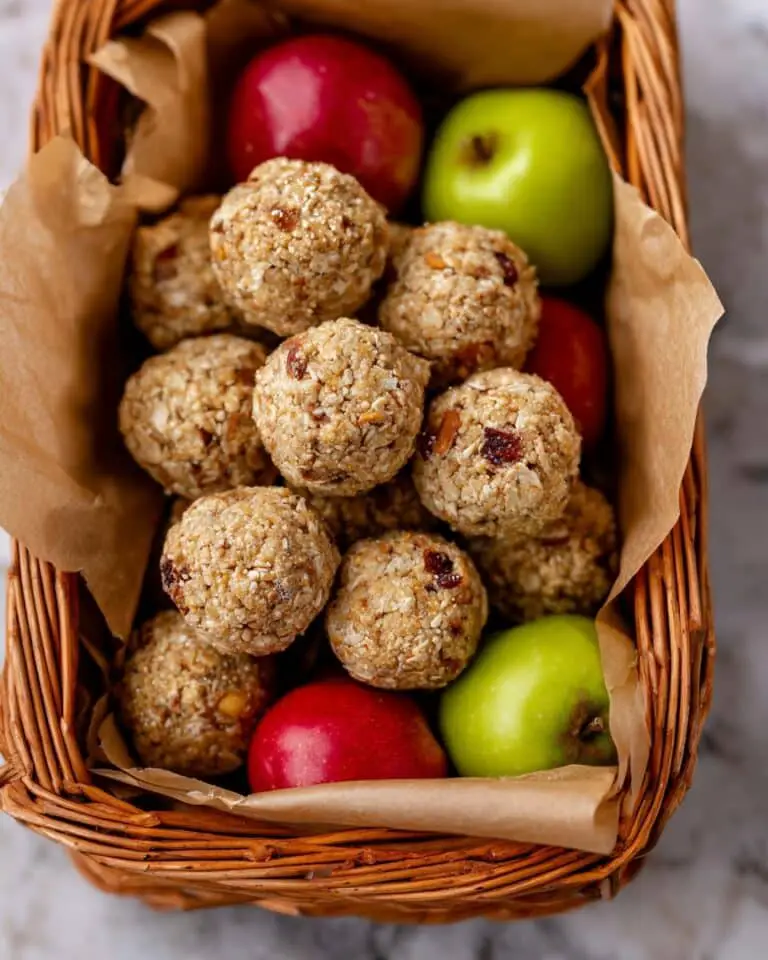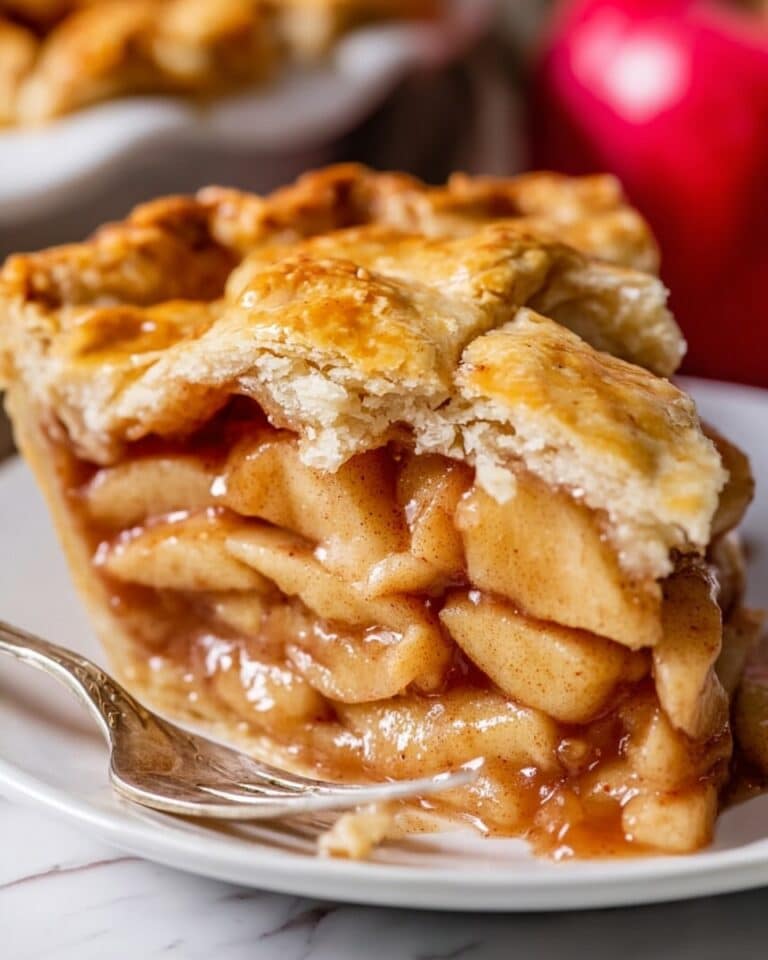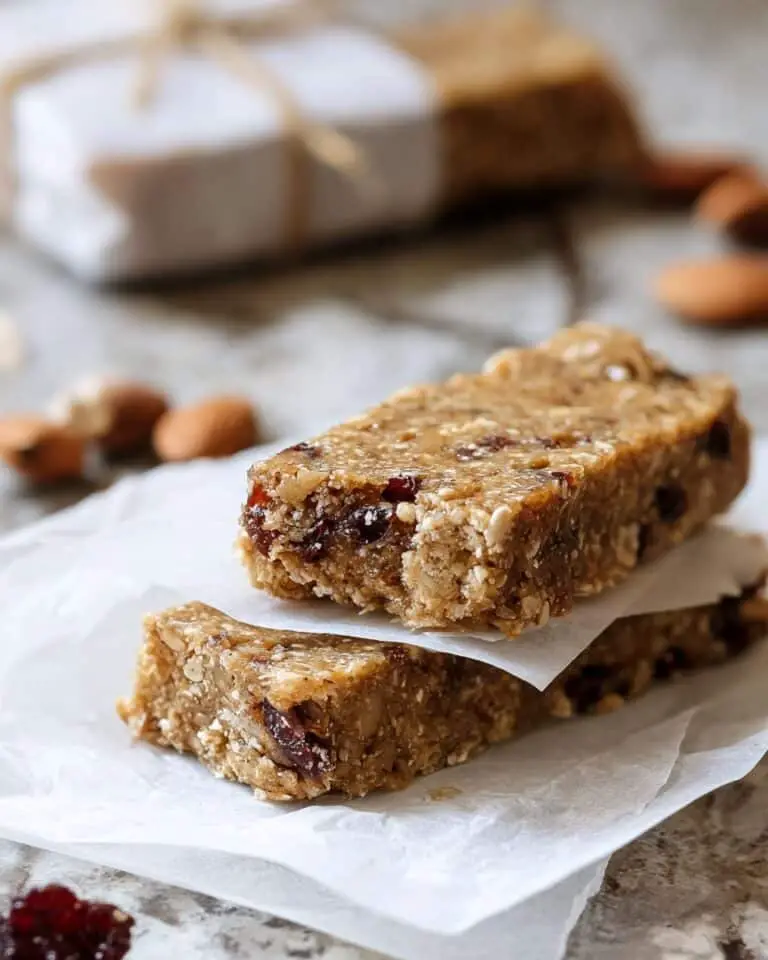If you’ve ever craved that ultra-luxurious, creamy lobster soup you get at fancy restaurants, this Restaurant Quality Lobster Bisque Recipe will blow you away. I absolutely love how rich and velvety it turns out, with that deep lobster flavor that’s balanced perfectly by just a touch of sherry and herbs. It’s one of those dishes that’s perfect for a special dinner but also surprisingly doable at home without needing a professional kitchen.
When I first tried making lobster bisque, I used to struggle with getting that smooth, silky texture and intense flavor that you’d expect out of a restaurant. Then I discovered this method involving cooking down the lobster shells and using rice to add the perfect creaminess. You’ll find that it’s less intimidating than it looks—and worth every step. Your family will go crazy for this, and it’s a great recipe to pull out to really impress guests!
Why You’ll Love This Recipe
- Deep, authentic flavor: Using lobster shells and simmering them slowly builds that rich bisque taste that’s truly restaurant quality.
- Creamy, smooth texture: Cooking rice in the broth gives natural thickness without any flour or heavy roux, making it silky perfect.
- Impressively elegant but doable: The step-by-step process is straightforward with tips to get you a pro-level result at home.
- Flexible and customizable: You can easily tweak the herbs or spice level to make it just right for your taste.
Ingredients You’ll Need
These ingredients come together beautifully to create the flavors and texture you want in a restaurant quality lobster bisque. When shopping, try to get fresh lobsters if possible and check for a good quality clam juice or fish stock to keep the broth vibrant.
- Live lobsters: Fresh lobsters around 3 pounds total ensure the soup has robust flavor and plenty of meat to enjoy.
- Kosher salt: Perfect for seasoning throughout, it enhances the natural sweetness of the lobster.
- Olive oil: Adds a subtle fruitiness while sautéing the veggies—go for a good quality extra virgin if you can.
- Carrot, celery, and white onion: The classic mirepoix base adds natural sweetness and depth to the soup.
- Garlic: Just a couple of cloves to give a warm aromatic background flavor.
- Dried tarragon and thyme: These herbs complement lobster perfectly, boosting its ocean-fresh taste.
- Tomato paste: It adds umami and helps deepen the bisque’s color and richness.
- Cayenne pepper: Just a hint for a gentle kick, but you can adjust or swap with white pepper.
- Sherry: Adds a pleasant acidity and complexity; cooking off the alcohol leaves a lovely flavor behind.
- Clam broth: This intensifies the seafood profile—if you can find fresh, even better.
- Long grain white rice: Using regular long grain rice is key, as it breaks down perfectly to create natural creaminess without grit.
- Heavy cream: Final touch to smooth and enrich the soup just before serving.
Variations
I like to switch things up here and there, depending on the occasion or what’s in my pantry. The beauty of this Restaurant Quality Lobster Bisque Recipe is how easy it is to personalize, so don’t hesitate to play around with herbs or even the type of alcohol you use.
- Sherry substitute: I’ve often swapped sherry with dry white wine or even a splash of cognac, which adds a lovely twist without overpowering the bisque.
- Dairy-free version: To make it dairy-free, I replace heavy cream with full-fat coconut milk—your bisque will be slightly different but still rich and creamy.
- Heat it up: If you prefer a spicier bisque, add a pinch more cayenne or a dash of hot smoked paprika for smoky warmth.
- Chunkier texture: For a rustic feel, reserve some of the lobster meat in bigger pieces and fold them in at the end instead of chopping finely.
How to Make Restaurant Quality Lobster Bisque Recipe
Step 1: Steam and Prepare Your Lobsters
Start by steaming the lobsters over boiling salted water—this locks in that fresh, sweet flavor. I like to cover the pot tightly to keep the heat consistent, and steam for about 9 minutes for the first pound, adding 4 minutes per additional pound. When they turn bright red and smell like the sea, they’re ready. Let them cool a bit (it’s easier on your hands!) before extracting the meat. Don’t toss any of that shell or liquid—you’ll be transforming those into the base of your bisque.
Step 2: Sauté Your Aromatics and Lobster Shells
Heat olive oil and gently cook your chopped carrots, celery, onions, and garlic until the onions are translucent—this builds a fragrant foundation. Then add the lobster shells and any residual juices you collected, letting them cook together for about 6 minutes. Stir in tomato paste and cayenne to add depth and a touch of heat, cooking for a few more minutes. The aroma here is a sure sign you’re on the right track!
Step 3: Build and Simmer the Broth
Pour in the sherry and give it a little cook—whether you decide to ignite it or just let the alcohol cook off in the pan, the flavor will deepen beautifully. Add clam broth and reserved lobster steaming water, then bring everything to a simmer, covering and letting it gently bubble for about an hour. This slow extraction pulls all those lobster flavors right out of the shells and into the liquid, making a bisque that tastes like it was simmered for hours at a restaurant.
Step 4: Strain and Finish the Bisque
Use a fine mesh sieve or colander to strain the broth, pressing down firmly to get all that luscious flavor out. Return the strained broth to a clean pot and add your rice, cooking low and slow until the grains are very soft—this step creates the silky consistency without needing any flour or starch. Once softened, blend the bisque until smooth and strain it again for that ultra-fine texture. Stir in the heavy cream, warm through gently, then add your chopped lobster meat. Season to taste, and you’ve got beautiful, restaurant quality lobster bisque ready to serve.
Pro Tips for Making Restaurant Quality Lobster Bisque Recipe
- Don’t rush the shell simmer: Simmering the shells for a full hour is the key to that intense lobster flavor, so give it time for the best result.
- Use rice, not flour: I learned this trick early on—rice breaks down naturally and creates perfect creaminess without any graininess.
- Strain twice for smoothness: Blending and then straining again really makes the texture comparable to any top-tier restaurant bisque.
- Keep lobster meat tender: Adding the lobster meat at the very end preserves its delicate texture and sweet flavor.
How to Serve Restaurant Quality Lobster Bisque Recipe

Garnishes
I like to keep garnishes simple but elegant: a sprinkle of finely chopped fresh chives or parsley adds freshness and color, and a small drizzle of good olive oil or a spoonful of crème fraîche on top takes presentation to the next level. A few tiny lobster claw pieces on top make a beautiful statement and a little nod to the star ingredient.
Side Dishes
This bisque pairs beautifully with crusty French bread or buttery garlic crostini to soak up every last bit. I’ve also served it alongside a crisp green salad with lemon vinaigrette for contrast. If you want to keep it fancy, a light seafood salad or simple roasted asparagus complements the bisque without overpowering it.
Creative Ways to Present
For special occasions, I sometimes ladle the bisque into elegant espresso cups for a fun appetizer or into hollowed-out mini sourdough bowls for a rustic-chic look. Garnishing with edible flowers or microgreens gives it that wow factor that guests adore. You could also float a tiny lobster claw or a swirl of saffron cream for a splash of visual drama!
Make Ahead and Storage
Storing Leftovers
I usually store any leftover bisque in an airtight container in the refrigerator for up to two days. It keeps its flavor beautifully but try to add the lobster meat fresh when reheating if possible—this keeps it tender instead of getting rubbery.
Freezing
Freezing works well for the bisque base without cream or lobster meat—it freezes beautifully and reheats without losing texture. I freeze in small portions, then add cream and lobster meat fresh after thawing and warming gently on the stove. This way, you get near-fresh taste anytime with less effort.
Reheating
To reheat, warm your bisque slowly on the stovetop over low heat, stirring occasionally to prevent scorching. Add lobster meat towards the end and heat gently just until warm. Avoid microwaving if you can—it’s easy to overcook the lobster that way.
FAQs
-
Can I use lobster tails instead of whole lobsters for this bisque?
You can use lobster tails, but using whole lobsters including claws and shells is best for extracting maximum flavor in the broth. The shells are essential to building that deep richness that defines a restaurant quality lobster bisque.
-
Is there a good substitute for clam broth if I can’t find it?
If you can’t find clam broth, a quality fish stock or even seafood fumet is a great substitute to maintain the seafood essence in the bisque. Avoid plain vegetable or chicken broth as it won’t deliver the same depth of flavor.
-
How do I adjust the spice level in this lobster bisque recipe?
The recipe uses a small amount of cayenne pepper for subtle heat, but you can easily increase or decrease it based on your preference. You might also try adding smoked paprika or a dash of hot sauce if you want a bolder spicy kick.
-
Can I prepare parts of this bisque ahead of time?
Yes! You can prepare and simmer the broth with the shells ahead of time, then strain and refrigerate it. Add cream and lobster meat fresh when reheating to keep the flavors bright and textures perfect.
Final Thoughts
This Restaurant Quality Lobster Bisque Recipe has become a go-to when I want to impress but still keep things relaxed in the kitchen. It’s a dish that feels luxurious yet approachable, and I find it’s always a crowd-pleaser. If you’ve been hesitant about trying lobster bisque at home, trust me—it’s easier than it seems, and the authentic flavors you achieve make every step worthwhile. Pour yourself a glass of sherry, roll up your sleeves, and enjoy the process of creating something truly special!
Print
Restaurant Quality Lobster Bisque Recipe
- Prep Time: 20 minutes
- Cook Time: 1 hour 10 minutes
- Total Time: 1 hour 30 minutes
- Yield: 4 servings
- Category: Soup
- Method: Stovetop
- Cuisine: French
- Diet: Low Lactose
Description
This Restaurant Quality Lobster Bisque recipe delivers a rich and creamy seafood soup that highlights the sweet, delicate flavor of lobster. Made from scratch using live lobsters, aromatic vegetables, herbs, sherry, and finished with heavy cream, this bisque offers a luxurious, silky texture and deep, complex taste perfect for a special occasion or gourmet meal at home.
Ingredients
Seafood
- 2 live lobsters (about 3 pounds total)
Vegetables & Herbs
- 1 medium carrot, chopped
- 2 ribs celery, chopped
- 1 medium white onion, chopped
- 2 cloves garlic, minced
- 1 teaspoon dried tarragon
- 1 teaspoon dried thyme
Liquids & Others
- 2 teaspoons kosher salt
- 2 tablespoons olive oil
- 3 tablespoons tomato paste
- 1/8 teaspoon cayenne pepper (or white pepper as substitute)
- 1 1/2 cups sherry
- 3 cups clam broth (or fish stock)
- 1/2 cup long grain white rice
- 1 cup heavy cream
Instructions
- Steam Lobsters: Bring 2 inches of water with 2 teaspoons of kosher salt to a boil in an 8- to 10-quart stockpot. Using tongs or gloves, put lobsters headfirst into the pot and cover tightly. Once water returns to a heavy boil, reduce to a rolling boil, and steam lobsters for 9 minutes for the first pound plus 4 minutes for each additional pound. The lobsters will turn bright red when done. Remove and cool in water or let rest for 3-5 minutes before shelling. Reserve the steaming liquid.
- Extract Lobster Meat: Twist off claws and tails. Crack claws and knuckles with a kitchen knife side or nutcracker and extract meat, reserving any juices. Crack tail shell and remove tail meat, slicing lengthwise and removing the black intestinal vein. Coarsely chop lobster meat and refrigerate. Roughly chop the shells and all lobster remnants and set aside.
- Sauté Vegetables and Shells: Heat olive oil in a large pot over medium heat. Add carrot, celery, onion, garlic, dried tarragon, and thyme. Sauté until onions are translucent, about 5 minutes. Add lobster shells and reserved liquids, cooking 6 more minutes. Stir in tomato paste and cayenne pepper, cooking for 4 minutes.
- Deglaze and Simmer Broth: Add sherry and ignite or cook until alcohol evaporates. Add clam broth and 1 cup of reserved lobster-steaming liquid. Bring to a simmer, cover, and cook for 1 hour. Strain through a sieve or colander, pressing solids to extract all liquid.
- Cook Rice in Broth: Wipe out the pot and return the strained broth. Add the rice, bring to a boil, then cover and reduce heat to low. Cook for at least 30 minutes until rice grains are very soft.
- Blend and Strain Bisque: Blend the bisque in a blender or food processor until smooth. Pass through a sieve again, pressing solids to extract maximum liquid, ensuring silky texture.
- Finish Bisque: Return bisque to the pot, stir in heavy cream, and gently bring to a low simmer. Add chopped lobster meat, heat through, season to taste with salt, and serve hot.
Notes
- 2 live lobsters should weigh about 3 pounds total depending on size.
- Cayenne pepper can be substituted with white pepper if preferred for a milder heat.
- Clam broth can be replaced with fish stock if available for a different seafood flavor profile.
- Use long grain white rice only; avoid converted rice to keep the bisque smooth.
Nutrition
- Serving Size: 1 cup (about 250 ml)
- Calories: 350 kcal
- Sugar: 4 g
- Sodium: 650 mg
- Fat: 22 g
- Saturated Fat: 13 g
- Unsaturated Fat: 8 g
- Trans Fat: 0 g
- Carbohydrates: 15 g
- Fiber: 1 g
- Protein: 18 g
- Cholesterol: 150 mg









